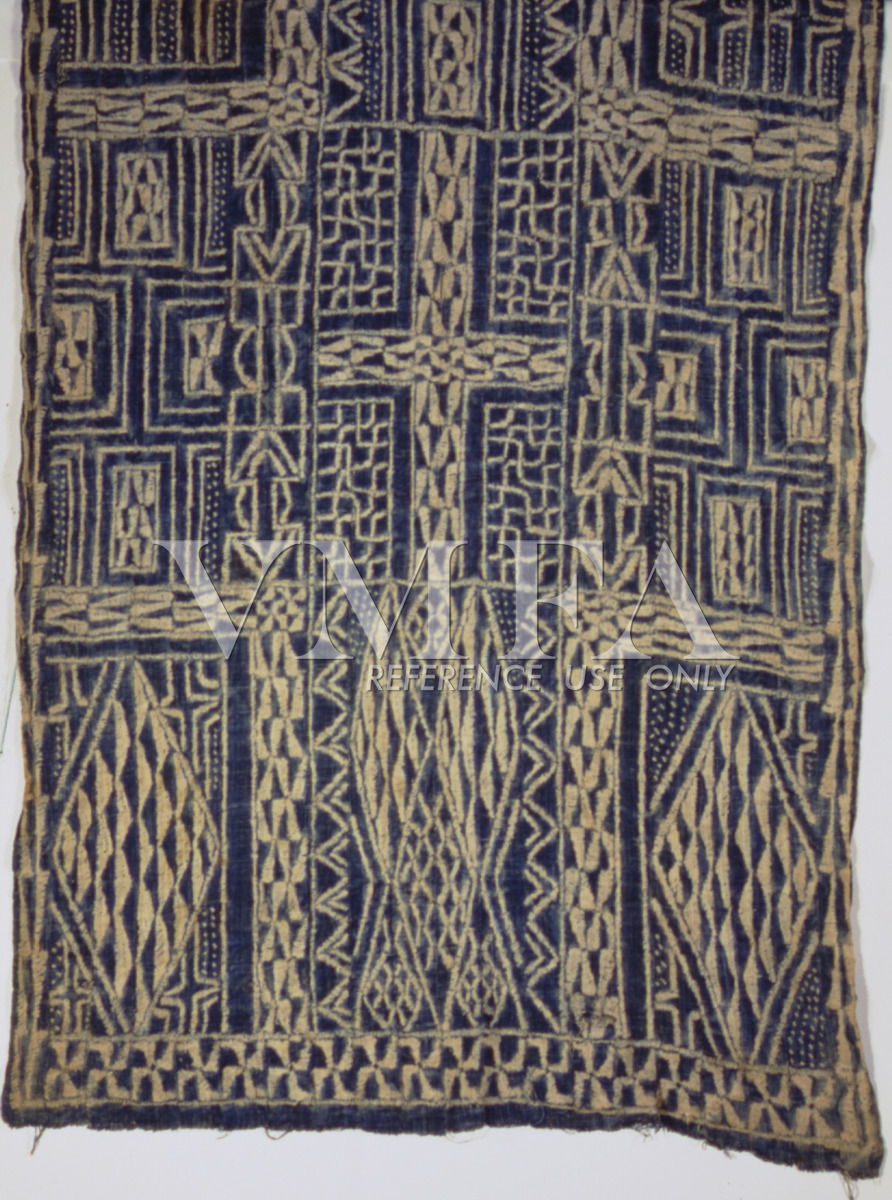
Ndop Cloth (Royal Blue-and -White Cloth) (Primary Title)
(Primary Title)
Unknown (Artist)
This dramatically patterned blue-and-white textile is thirty feet long; only a portion of the whole cloth is visible here. It was made by sewing narrow strips of hand-woven cloth together, side by side. The design was created by applying cassava starch paste to certain areas of the cloth to ensure that they would remain natural cotton color, while the rest would turn deep blue when the fabric was submerged in a vat of indigo dye. This process is called resist dyeing. This type of blue-and-white cloth is famous for being commissioned by Njoya, the renowned 17th king of the Bamum people in northern Cameroon, who reigned from 1886 to 1933. This piece of yardage might be from the time of Njoya’s reign. Blue-and-white textiles of this kind, called ndop, are used in making mask costumes and serve as royal gifts. But their most important use is as a backdrop to define the space for the ruler, his regalia, and royal statuary, during public ceremonies. A sense of this use is created here by placing the statue of a court figure in front of the handsome cloth
Gift of Dr. L. Marian Wouters
Image released via Creative Commons CC-BY-NC
Some object records are not complete and do not reflect VMFA's full and current knowledge. VMFA makes routine updates as records are reviewed and enhanced.

